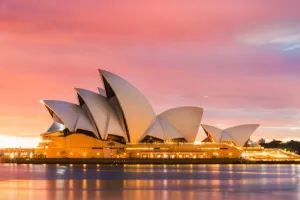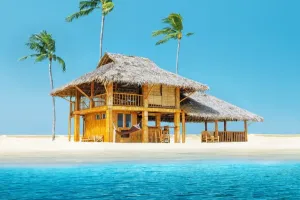When it comes to Home Décor, there are countless types of design styles to choose from. From Art Deco to Coastal, it feels like there's an infinite number of styles of home decor out there, and it can be confusing to know what each one really means. So, it’s better to learn a bit about each of the styles and how they differ from one another.
1. MODERN
Modern is a broad design term that typically refers to a home with clean, crisp lines, a simple colour palette and the use of materials that can include metal, glass and steel. Modern design employs a sense of simplicity in every element, including furniture. A word that’s commonly used to describe modern style is sleek, and there is not a lot of clutter or accessories involved with a modern style.
2. CONTEMPORARY
Modern and contemporary are two styles frequently used interchangeably. Contemporary is different from modern because it describes design based on the here and now. The primary difference separating modern and contemporary design style is that modern is a strict interpretation of design that started in the 20th century. Contemporary on the other hand, is more fluid and can represent a sense of currency with less adherence to one particular style. For example, contemporary style may include curving lines, whereas modern design does not. You can refer to modern vs contemporary article for more information.
3. MINIMALIST
The minimalist concept is one that’s popular here in Australia. It takes notions of modern design and simplifies them further. Colour palettes are neutral and airy; furnishings are simple and streamlined, and nothing is excessive or flamboyant in accessories or décor. Minimalism is ultimately defined by a sense of functionality and ultra-clean lines.
4. INDUSTRIAL
Industrial style as the name implies, draws inspiration from a warehouse or an urban loft. There’s a sense of unfinished rawness in many of the elements, and it’s not uncommon to see exposed brick, ductwork and wood. An iconic home with an industrial design theme would be a renovated loft from a former industrial building. Think high ceilings, old timber and dangling metal light fixtures with sparse functional furniture. There may possibly be one or two pieces of abstract art or photography to add a dash of colour to an otherwise neutral colour scheme derived from the primary materials of wood and metals.
5. MID-CENTURY MODERN
Mid-century modern is a throwback to the design style of the mid-1900s—primarily the 1950s and 60s. There’s a retro nostalgia present in Mid-Century Modern Design, and also some elements of minimalism. Functionality or “fussy-free” was the main theme for Mid-century design. It emphasis on pared-down forms, natural or organic shapes such as “egg-shaped” chair, easy-to-use contemporary designs and simple fabrications. It easily complements any interior and also helps with seamless transition from interior to exterior.
6. SCANDINAVIAN
Scandanavian design pays homage to the simplicity of life demonstrated in Nordic countries. Scandinavian furniture design often feels like a work of art, although it is simple and understated. There’s functionality in the furniture along with some interesting lines, many of which have a sculptural influence. Other common characteristics include all-white colour palettes and the incorporation of natural elements like form-pressed wood, bright plastics, and enameled aluminum, steel and wide plank flooring. If there are pops of colour it often comes from the use of art, natural fibre throws or furs, or a single piece of furniture. Spacious, natural lighting, less accessories and functional furniture characterizes Scandinavian designs.


